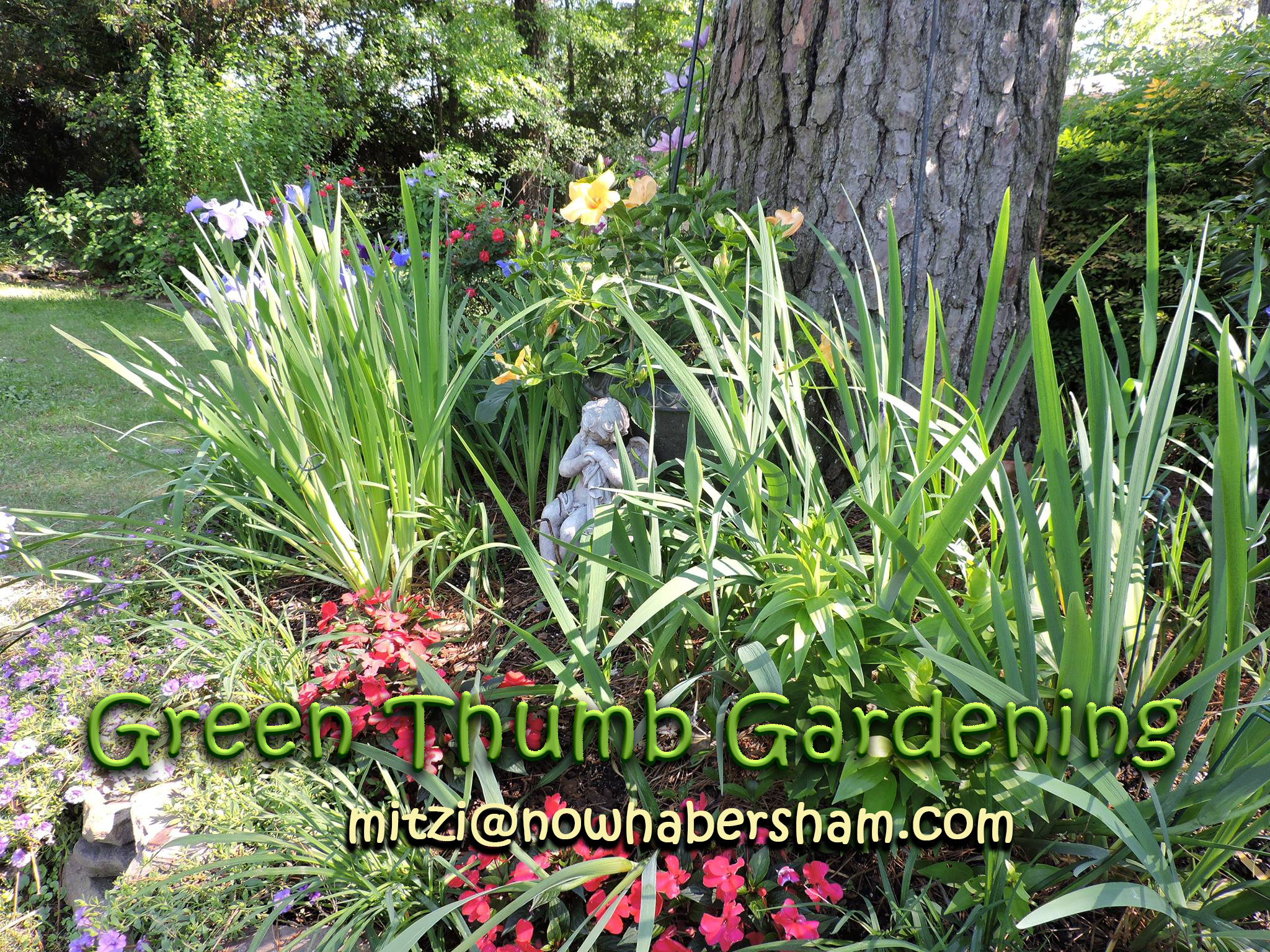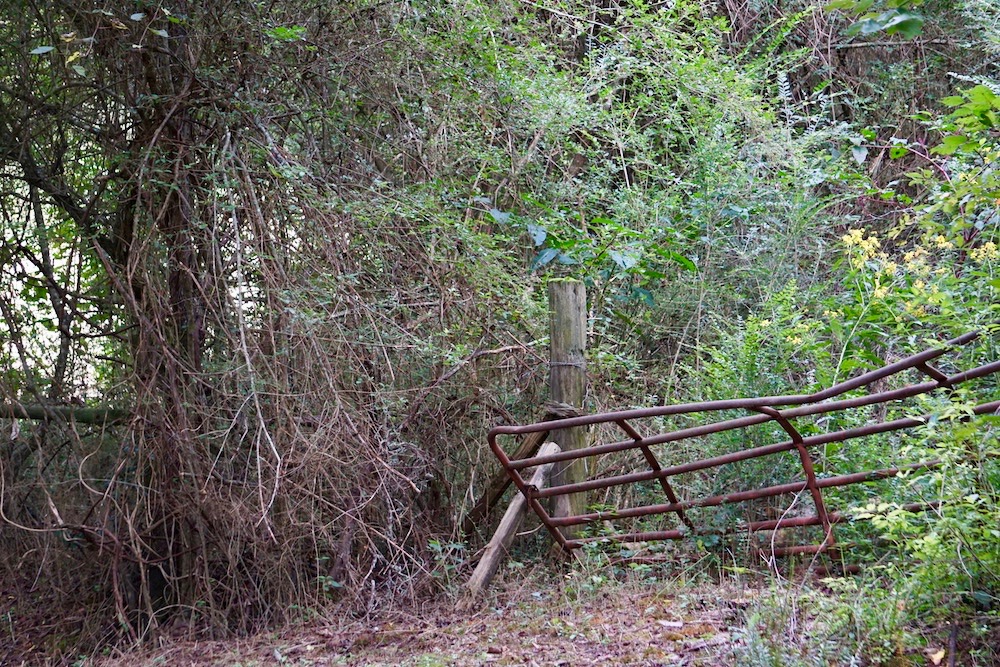
Treating woody brush and vines often takes a combination of chemicals and manual removal to be successful long term. The best chemicals to apply are often soil active, so care must be taken to prevent damage to desirable trees and shrubs. Products like 2-4D, dicamba, and triclopyr are very effective on things like privet and poison ivy, but you’ve gotta realize they can damage desirable plants and remain soil active for 6-8 weeks. Products like Round-up with glyphosate are not soil active. They will knock back vegetation, but you can’t always count on them to eliminate woody vegetation long term.
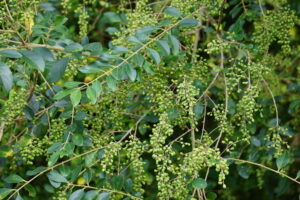
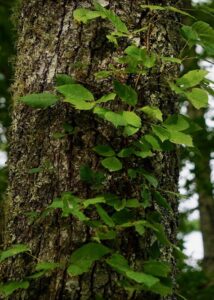
One method I like to use is a basal spray or cut stump method. When I’m in the landscape I’ll remove undesirable trees and shrubs by cutting them out. To prevent regrowth, I’ll paint the cut stump with full strength triclopyr. It doesn’t take a lot, and the tree won’t resprout. This can work for small trees and vines, as well as larger stumps from full sized trees. The basal spray method means you treat the base of trunk, where the plant comes out of the ground. This leaves the top to die, which is acceptable to some folks, but I prefer to clean it up and remove it while working. For vines it’s easy to cut them off where they come out of the ground and treat the stump. That way you don’t have to worry about spraying the remainder of the vine that might be out of reach, and is difficult to spray.
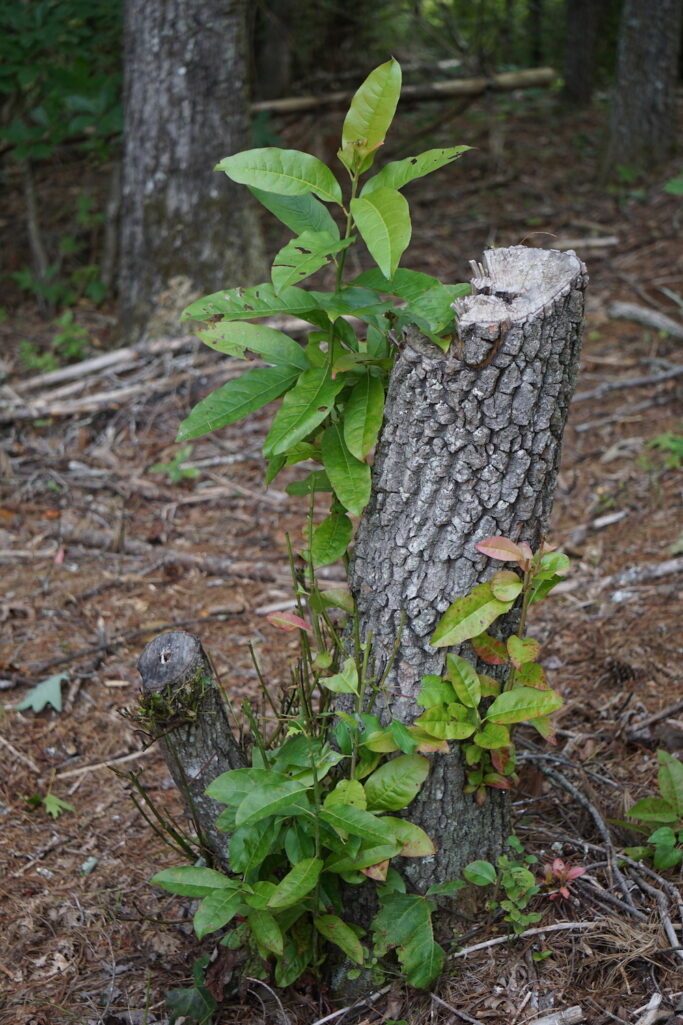
With any chemical it’s important to always read the pesticide label for further safety instructions. Treating brush and vines can be easy, when you take your time, apply the right chemical, and be careful with it’s application. Always remember that most broadleaf herbicides are soil active and can continue to work for 6-8 weeks. If you need control, and would like to plant something back immediately, consider using glyphosate instead. For more information on what to spray for which application, check out the Georgia Pest Management Handbook.

